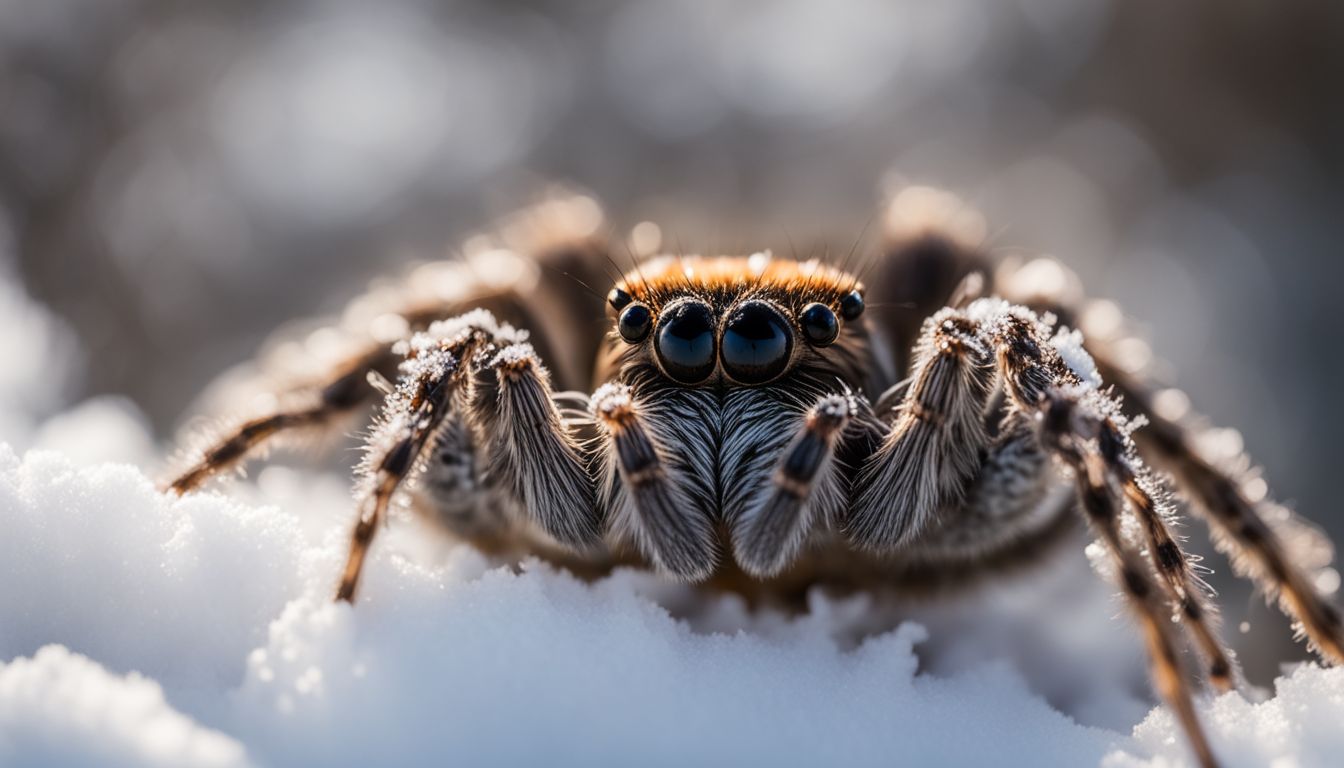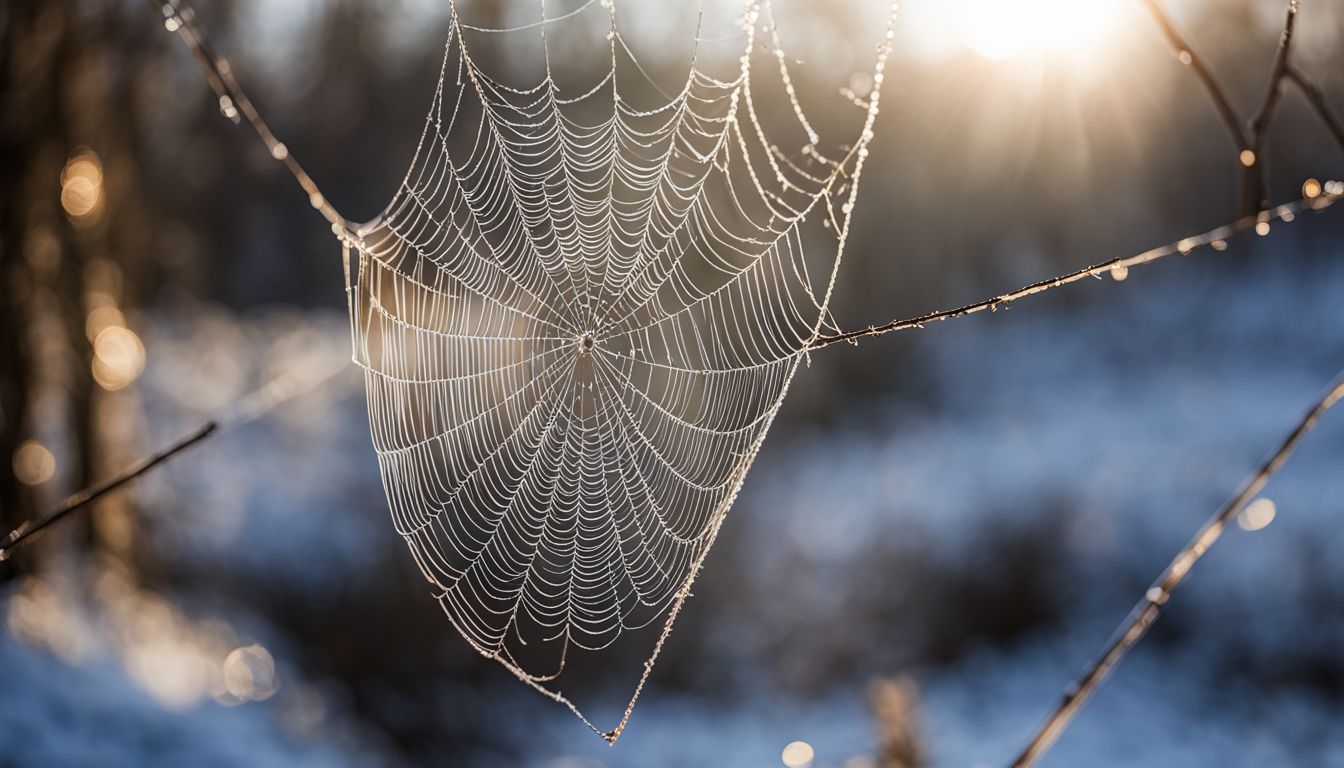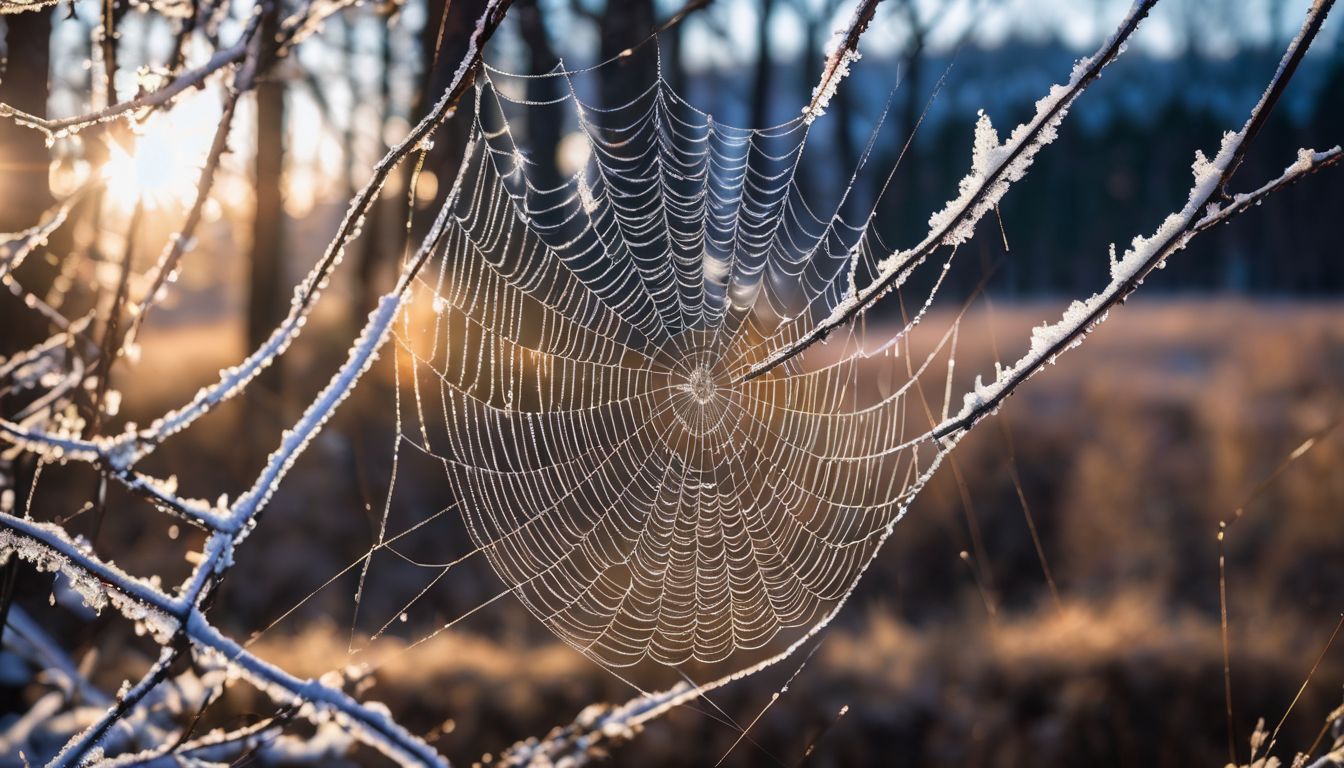As winter rolls in, you might wonder where all the spiders go. Did you know some spiders can produce their own antifreeze to withstand the cold? This article will uncover the fascinating ways spiders manage to survive through chilly winters.
Stay with us for some cool spider facts!
Key Takeaways
- Spiders survive winter through biological adaptations like producing antifreeze compounds and entering diapause, a hibernation-like state.
- They seek shelter indoors or use natural debris for protection during colder months.
- Common winter spider species employ unique survival strategies, such as the American house spider’s ability to stay active in warm indoor environments and the Brown Recluse’s resilience without food or water for long periods.
- Preventative measures like sealing entry points, maintaining a clean environment, and using natural repellents can help manage spiders in homes during winter.
Understanding Spider Biology and Winter Behavior

Spiders have a unique ability to survive the harsh winter months through a cold-hardening process and a diapause phase. Understanding these biological adaptations can provide insight into how spiders manage to thrive in colder temperatures.
Cold-hardening process
As winter comes, some spiders use a cool trick to stay alive. Their bodies make a special stuff called glycerol which acts like antifreeze in our cars. This keeps their blood from freezing even when it gets really chilly outside.
To get ready for the cold, these crawly friends slow down and change how their bodies work. They don’t need as much food and can handle lower temperatures better. Think of it like putting on a warm coat and eating less to save your energy for staying warm!
Diapause phase for survival
Spiders have a special trick to make it through winter. They enter diapause, which is like taking a long nap. During this time, their bodies slow down to save energy. This lets them live even when it’s very cold and there isn’t much food around.
They change their body chemistry before the cold hits. This process is called cold-hardening and helps protect them against freezing temperatures. While in diapause, spiders don’t move much or eat, but they can survive until spring comes back with warmer weather and more insect prey to munch on.
Now let’s take a look at where spiders hide out during those chilly months.
Spider Habitats During the Colder Months

Spiders seek shelter indoors or utilize natural debris and environments to survive the colder months. Understanding their habits can help prevent spider infestations in your home.
Seeking shelter indoors
In the winter, some spiders move into homes to find warmth and safety. They like quiet spots where they won’t be disturbed. Places like basements, crawl spaces, or corners of rooms are often where you might see them.
These spiders may have come from outside or could have been born right in your house.
Not all types of spiders look to live inside during cold months though. Many stay inactive and hidden until it gets warm again. In your home, you’re less likely to notice spiders because the chilly weather makes them slow and sleepy.
Utilizing natural debris and environments
Spiders utilize natural debris like leaves, grass, and wood to create safe spaces for laying eggs and hibernating during the colder months. This debris provides shelter from harsh weather and predators, ensuring the survival of spider egg sacs through winter.
Undisturbed areas also offer spiders a suitable environment for dormancy, helping them conserve energy until the weather becomes milder again.
During winter, spiders seek out undisturbed places to lay their eggs and survive in natural environments. Now let’s explore common winter spider species and their strategies.
Common Winter Spider Species and Their Strategies
Explore the unique strategies of common winter spider species such as the American House Spider, Brown Recluse, and Wolf Spider for surviving the cold months. Understanding their behavior can help in managing them effectively.
The American House Spider
The American house spider is a common sight in homes, known for its messy and irregular webs. These spiders are helpful because they catch and eat insects like mosquitoes, flies, and other pests.
They prefer to live near people where there are plenty of bugs to feed on. Unlike some other species, the American house spider doesn’t do well outside in cold weather and may not survive in harsh climates.
These spiders can often be found indoors throughout the year, including winter months. Despite their small size, they remain active even when it’s chilly outside. The warmth inside our homes provides them with a comfortable environment where they can continue hunting for food all year round without worrying about freezing temperatures affecting their survival.
The Brown Recluse
The Brown Recluse spider is remarkable at surviving without food or water. It can go for up to 12 months without needing any sustenance, making it a resilient species. Unlike other house spiders, the Brown Recluse can endure longer periods without food.
In the United States, there are 13 different species of Loxosceles and the brown recluse is one of them.
Now let’s delve into another intriguing winter survival strategy – The Wolf Spider.
The Wolf Spider
Wolf spiders are a common sight in winter, and some species even grow during the colder months. They adapt to the cold by undergoing metabolic changes and accumulating cryoprotectants to survive low temperatures.
These hairy and agile arachnids have two hunting strategies – waiting for prey to pass by or actively chasing it down, which helps them thrive in winter. Some wolf spider species, like the Hogna carolinensis and H.
aspersa, can be found in Pennsylvania during winter.
Preventative Measures to Manage Spiders in Winter
Sealing entry points is essential to keeping spiders out of your home during winter. Maintaining a clean environment and regularly removing spider webs can also help prevent infestations.
Sealing entry points
To keep spiders out of your home during winter, follow these simple steps:
- Inspect the exterior of your home for any gaps or cracks and seal them with caulk or weather – stripping.
- Replace damaged window screens and install door sweeps to close gaps at the bottom of doors.
- Keep outdoor lights off or switch to yellow sodium vapor lights, as they are less attractive to insects which in turn attract spiders.
- Trim back vegetation and branches that touch the house, as these can provide easy access for spiders.
Maintaining a clean environment
Regular vacuuming, dusting, and sweeping can disturb spiders’ hunting and nesting. This may lead them to seek a safer place to live. Keeping your home clean is an effective way to manage spider populations during winter when they are more likely to seek shelter indoors.
It’s important because some pests like cockroaches, pharaoh ants, and spiders are more prevalent in the winter, making it crucial to maintain preventative measures for pest control during this time.
Now let’s explore how to Keep Spiders Off Your Porch in the colder months.
How to Keep Spiders Off Your Porch
To keep spiders off your porch, you can take the following steps:
- Clean up debris and clutter around the porch area to remove potential spider hiding spots.
- Use a natural spider repellent spray, such as a mixture of water and peppermint essential oil, to deter spiders from settling on your porch.
- Seal any gaps or cracks in the porch structure to prevent spiders from finding their way inside.
- Install yellow or sodium vapor light bulbs outside as they are less attractive to insects and subsequently, fewer spiders will be drawn to them.
- Regularly sweep and dust the porch area to remove cobwebs and discourage spiders from making themselves at home.
Conclusion
In conclusion, spiders survive winter by using biological adaptations and behaviors. They may stay less active or enter diapause to withstand colder temperatures. Some species employ antifreeze-like compounds to prevent freezing and continue surviving in the cold.
By understanding their strategies, we can coexist with these fascinating creatures during the winter months.
FAQs
1. What do spiders like tarantulas and jumping spiders do in the winter?
In the winter, some spiders like tarantulas and jumping spiders hide in warm spots, slow down, and wait for spring.
2. Can spiders lay eggs during cold weather?
Yes, many spiders lay eggs before it gets cold. They leave them in an egg sack to keep safe until spring.
3. How does a black widow spider stay alive when it is snowing?
A black widow spider finds sheltered places where they can be out of the snow and keep their body temperature steady.
4. Do all spiders survive the winter outside?
No, not all of them. Some small ones might come inside houses to get away from the cold or hide under things like rocks or wood outside.
5. What happens with baby spiders (spiderlings) when it’s wintertime?
Spiderlings usually stay safe and warm in their egg sacks until after winter is over.




